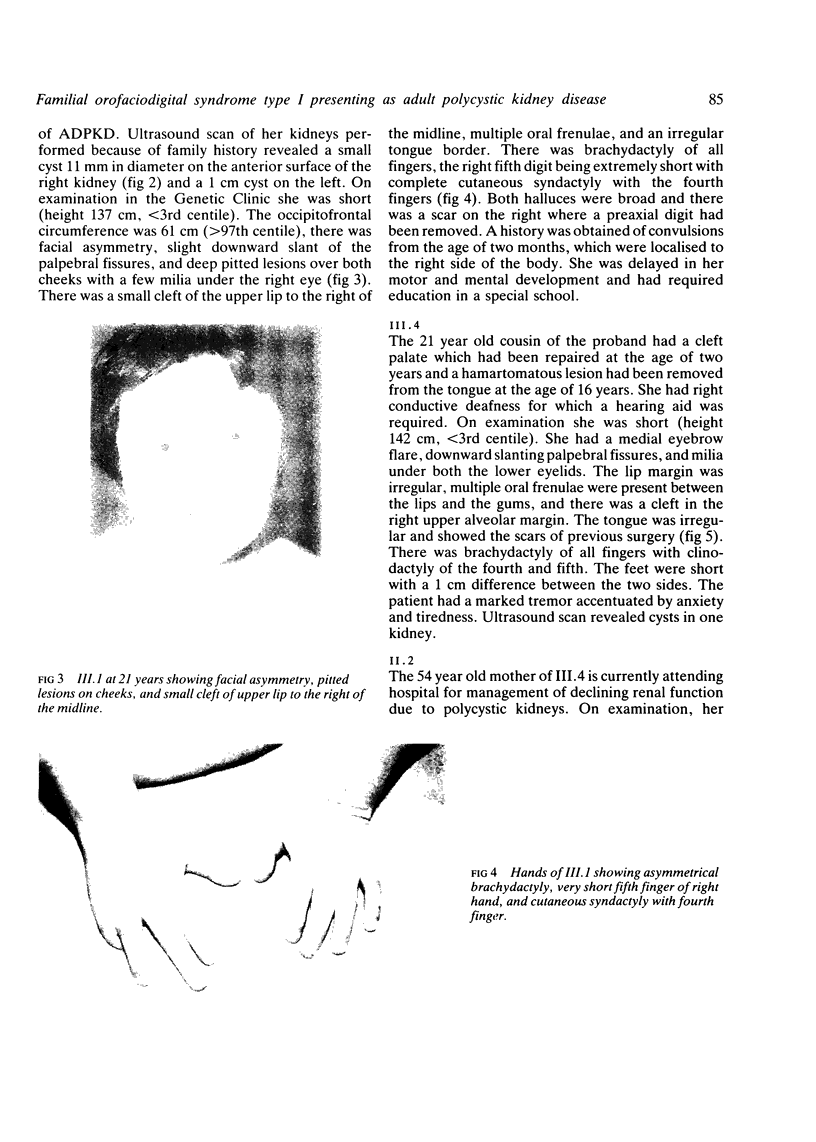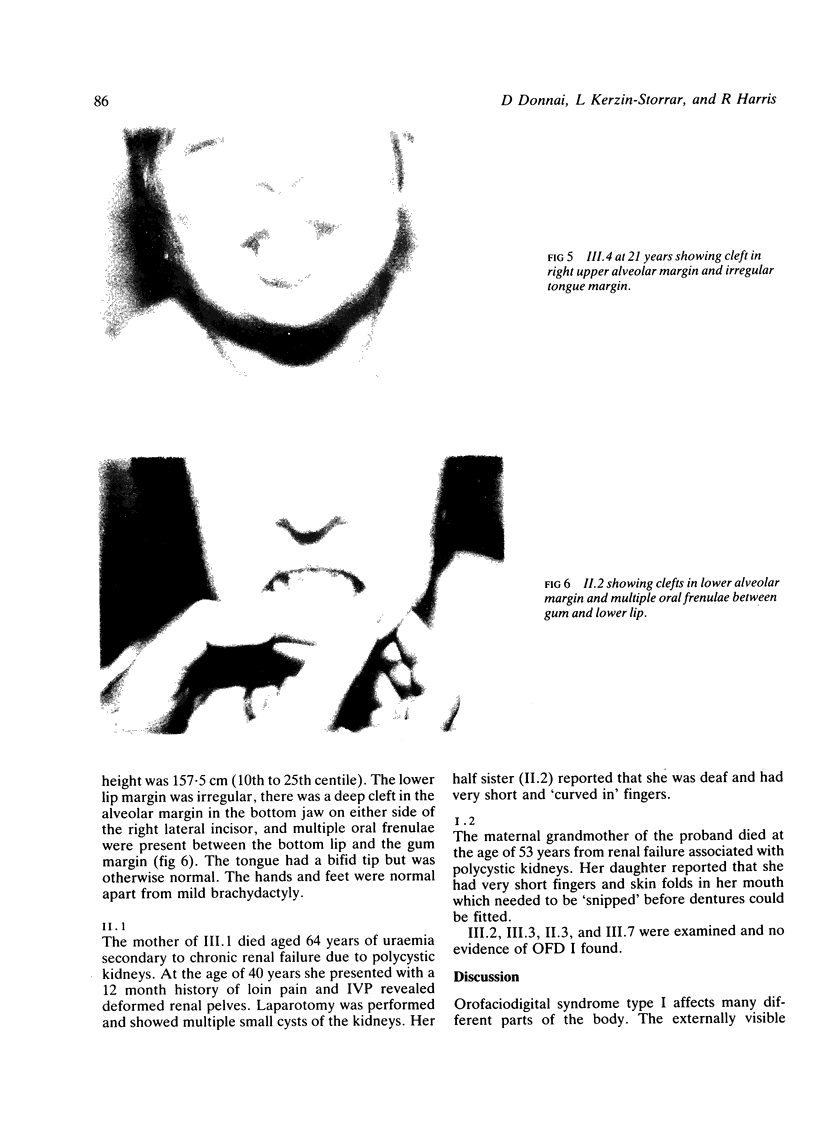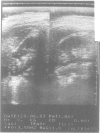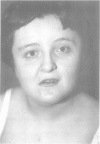Abstract
A three generation family with orofaciodigital syndrome type I is described. Several family members had been thought to suffer from autosomal dominant polycystic kidney disease but examination of the proband led to establishment of the correct diagnosis. The genetic implications for the offspring of the affected women and other family members were significantly altered.
Full text
PDF



Images in this article
Selected References
These references are in PubMed. This may not be the complete list of references from this article.
- DOEGE T. C., THULINE H. C., PRIEST J. H., NORBY D. E., BRYANT J. S. STUDIES OF A FAMILY WITH THE ORAL-FACIAL-DIGITAL SYNDROME. N Engl J Med. 1964 Nov 19;271:1073–1078. doi: 10.1056/NEJM196411192712101. [DOI] [PubMed] [Google Scholar]
- GORLIN R. J., PSAUME J. Orodigitofacial dysostosis--a new syndrome. A study of 22 cases. J Pediatr. 1962 Oct;61:520–530. doi: 10.1016/s0022-3476(62)80143-7. [DOI] [PubMed] [Google Scholar]
- Harrod M. J., Stokes J., Peede L. F., Goldstein J. L. Polycystic kidney disease in a patient with the oral-facial-digital syndrome - type I. Clin Genet. 1976 Feb;9(2):183–186. doi: 10.1111/j.1399-0004.1976.tb01565.x. [DOI] [PubMed] [Google Scholar]
- Majewski F., Lenz W., Pfeiffer R. A., Tünte W., Müller H. Das oro-facio-digitale Syndrom. Symptome und Prognose. Z Kinderheilkd. 1972;112(1):89–112. [PubMed] [Google Scholar]
- PAPILLON-LEAGE, PSAUME J. Une malformation héréditaire de la muqueuse buccale, brides et freins anormaux. Revue Stomatol. 1954 Apr;55(4):209–227. [PubMed] [Google Scholar]







